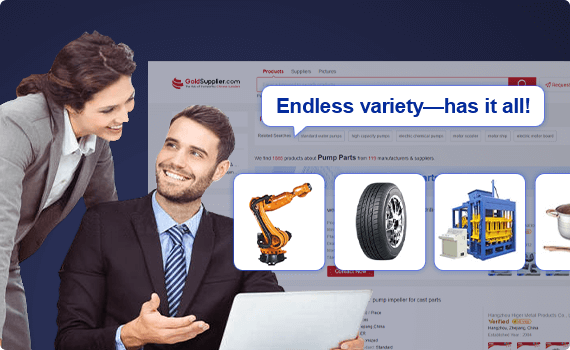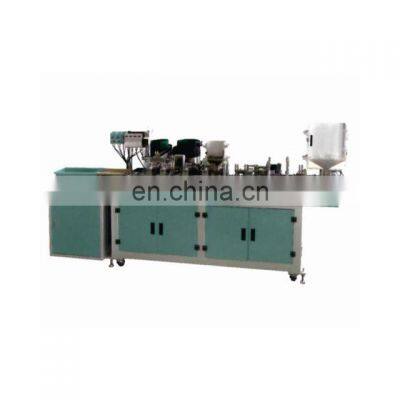Assembly Line Insights & Buyer's Guide
Humanity has been changed thanks to how the assembly line has enabled the development of industries. This is a concept that started during the Industrial Revolution and helped to augment the efficiency of production, which was a substantial advancement from the way things were done before then. It was mainly made possible by Henry Ford, who introduced the use of an assembly line in the construction of vehicles at the Ford Motor Company and in various other industries as well. Talents were one of the breakdowns of the process, which helped to reduce the assembly duration and heightened the rates of production. This ideology is the epitome of production technologies of today, where hi-tech automated assembly lines optimize efficiency and continuous innovation.
The invention of the assembly line can be traced back in history to the efforts of Henry Ford in the very early 20th century at the Highland Park plant. The moving conveyor belt, which was useful in making the Ford Model T’s was a brainchild of Ford's engineers. The process of manufacturing cars was no longer a hard task, and that is how the ‘Model T’ by Ford Company was able to manufacture their car in large numbers – every household had a ‘Model T’ by Ford Company. The assembly line did not help only the car manufacturers only but this system was incorporated by others, especially those involved in the production of goods on a large scale. When laborers perfected a certain part of their work in the line, it made the cost of producing goods less expensive, hence even the luxury commodities started being accessible.
The History of the Assembly Line
The Origins of the Assembly Line
The history of the assembly line can ultimately be found in the late 18th and early 19th centuries, an era when new methods of manufacture were being introduced. This was the time when old ways of manufacturing were gradually being replaced by methods that were more efficient and capable of coping with massive-scale industrialization. The practice of segmenting work into different task performances was perhaps already in existence, but it really became significant, especially in the efforts of industries to increase work efficiency and lessen the time spent. As different industries attempted at line techniques, a number of instances can be seen, such as the meat industry, where the assembly line in reverse was used for the handling of carcasses. Such elementary systems served as the foundation of the concept of the assembly line that had yet to be developed and that brought a new approach to the manufacturing of goods. And as the industry pushed for these new manufacturing methods, it was only a matter of time before more enhancements were made, and the pioneering of the moving assembly line in which mass production took a whole new shape, which would transform much more than just manufacturing.
Henry Ford and the Moving Assembly Line
Henry Ford’s innovative production methodology contributed to the establishment of the assembly line in the automobile industry. But it was not until 1913 that Ford’s engineers, in collaboration with him, mounted a radical floating assembly line in the Ford Highland factory. It changed the game in the car industry because the level of production increased while the time taken to assemble decreased. Because of Ford’s assembly line, people worked in the factory systems, which were divided into tasks and operated by the most efficient worker for each productive step. The introduction of the belt for transporting the manufactured items of the machine for each stage of construction, as the machine is built in operation, improved the process of construction as it eliminated wastages and increased performance levels. With this in mind, this introduced the barycenter standing version of the Ford Motor Company, which not only modified the production of the Ford Model T but also established reference points for other conveyor production lines in the future as well. Hence, the price of cars fell substantially, putting cars within the reach of many more people and realizing Ford’s dream of the world’s motorization.
Impact on the Automotive Industry
The moving assembly line had a significant impact on the automotive industry. It especially resonated within Ford Motor Company, where the introduction of the assembly line brought incredible advances in terms of productivity levels by slashing the time taken to produce a car. The productivity of this assembly line process came with less cost of production, consequently reducing the price of the Automobile to suit the affordability of the common man. The existence of automobiles became one of the most dominant means and facilitated the encroachment of towns and cities into the rural areas. However, the situation at Ford was not exceptional. Other companies that witnessed the success of the assembly line on the production level also borrowed a leaf from Ford and adopted this mode of production over time. The automobile assembly line revolutionized the scope of large-scale production as well as made way for modern assembly systems since industries embrace automated assembly lines and technology at large, which improves efficiency and facilitates growth.
The Evolution of Assembly Lines
From Manual to Automated Assembly
The evolution from the traditional assembly line to the mechanized one was one of the most remarkable changes in the production process. To begin with, the construction of these systems was stratified into various aspects with the employment of a large number of people who repetitively performed similar roles throughout the production process. Nevertheless, with the advent of new technology, this change in direction to efficiency gained momentum. It involved the machinery and robots in that process, which greatly improved efficiency and accuracy. Such mechanized processes ensured a consistent quality in the end products since machines do not wear out with fatigue or make mistakes like humans do while working on the assembly line. The advent of these transitions also sped up the processes and is conducive to the minimization of the time spent on assembly, hence helps in addressing the issue of increased mass production. More sophisticated "modern" production lines consist of a combination of both human intervention and robotics to further enhance the output of the manufacturing industry.
Key Innovations in Assembly Line Methods
Over time, many new ideas have come up and aided in improving the ways of assembly lines and increasing their efficiency. One such major milestone was the arrival of the conveyor belt, which changed the manner in which the products were transferred from one section of the assembly to another. This allowed a smooth transition of materials without breakages, hence ensuring productivity levels were maintained. Furthermore, the use of specialized machines for carrying out particular activities on an assembly line improved efficiency and subsequently enabled the manufacturers to assemble their complicated products at a quick pace and accurately. In recent years, assembly lines have also made a quantum leap with the incorporation of robots and automation. Not only do these technologies eliminate human errors, they allow for error oversight in some cases, making the whole process effective and efficient with respect to first-class precision of the end product. And this is the hope that as these technologies improve, they will make more advanced machinery that will make machines more consistently dependent and yet more effective than the assembly line.
Case Study: Ford Motor Company
The history of Ford Motor Company is one of the more illustrative of how simplifying the line approach in several industries, endlessly complex to manufacture by traditional or other means, could change the world. With Henry Ford at the helm, the company pioneered the introduction of the moving assembly line at its Highland Park factory back in 1913, turning the history of car manufacture on its head. This astounding technique made it possible to put together in a short time a vehicle called a Model T Ford, shortening the time the unit was to spend inside an assembly plant. The implementation of the mechanized system, along with cutting costs, improved production so much that vehicles could be priced in a way to make them affordable to a working person. The Ford Motor Company, as it was often referred to, practically stripped all vehicles of their units, facilitating mass-produced consumers’ means of motion. Encouraged by the success of Ford's production methodology, many more industries adopted and built the same concept of the assembly line, proving the historic transformation of processes through invention. Even now, Ford is leading in the use of the latest tools to manufacture better assembly line systems than any other industry.
The Role of Assembly Lines in Mass Production
Efficiency and Productivity in Manufacturing
This assembly line concept in the mass production process is important because it transforms manufacturing by increasing efficiency and productivity to a large extent. Precisely, by breaking down the manufacturing processes into smooth performances, the assembly lines have changed how products are made, where every worker on the assembly line is engaged in a particular production process. The advantage of this was that more products could be produced within a short time and with minimal mistakes or deformities in the products. A moving assembly line, which was a revolutionary invention of Henry Ford, was a classic case of such an application where a belt mechanism within the system allowed the product to be moved from one stage to another, without any downtime. This has resulted in substantial gains in the modern plastics assembly line system, which includes the use of robotic technology and vibratory, which are advantageous in the improvement of performance. The employment of machines and robots in the production process has made it possible for industries to generate goods in a much larger scale, so as to fulfill the growing needs of the markets without compromising on the quality and efficiency of the products.
Assembly Line Work: Skills and Labor Dynamics
The contribution of the line of work in the assembly line from the early days of the idea as propounded by Henry Ford, has changed dramatically. The workers working on assembly lines in the beginning were doing tiresome repetitive work, because they were assigned to do only one part of the work to make it easy to assemble the products. This assembly line was very much required for Ford's success of implementing assembly lines, as reduced assembly time and efficiency levels were achieved. Though with time, automation and contemporary assembly line have set in, and thus the kind of qualifications needed in the assembly line have also changed. In the present day, line workers have to know how to govern and monitor, however complex mechanisms incorporating machinery and computational internal workings are, making sure that everything is in place and integrated with human-attained control. This has shifted the labor imaginary from the old stagnant and conservative labor type to the more complex and dynamic labor type that provides its workers with skills, including the traditional craft, along with the modern machinery operations and maintenance. As the process of manufacturing developed more and more, so did the necessity for the labor force to be change-oriented and re-skill themselves to cope with all the modern assembly lines.
Environmental Implications of Mass Production
Mass production enabled by assembly line techniques raises several issues insofar as the sustenance of environmental best practices is concerned. From this perspective, the high efficiency as well as the economy of scale that comes with the use of assembly line production enhances resource and energy consumption, causing major environmental degradation. Furthermore, high production rates may incur accompanying rises in emissions and waste that would need a commercialization practices approach to reduce the footprint. However, technological innovations in the field of assembly line technology and green technology appear to have favorable approaches as frustrations occur in some quarters. The need for environmental regulation can be resolved by the use of innovative equipment that uses less energy and eco-friendly products in the processes. Subsequently, the process of production can also incorporate recycling within the existing cycle of operational activities with a view to minimizing post-production waste generation. These ‘green’ activities or practices, as they are commonly referred to, are current issues pervading assembly lines evolve modern times, and the sustainability of such management practices in relation to mass production is of paramount importance.
Frequently Asked Questions (FAQs)
What is the history of the assembly line?
The beginning of the assembly line goes back to the dawn of the 20th century in the automotive industry, when Henry Ford created the assembly lines for his car brand. This notable innovation made the processing of goods more rapid by developing tasks into a sequence of easy and repetitive actions. This approach was found in the works of Ford engineers, and it was practiced at Highland Park Ford Plant, where the production process was organized in such a way that enabled quicker assembly of cars. The assembly line concepts later found an application beyond the automotive factories and contributed to the development of mass production in other sectors. At present, to analyze the model of assembly lines, one can’t avoid an appreciation of a few stages, e.g., their emergence, how they have modified the way production is done.
How does the modern assembly line differ from traditional production?
The advanced technical methods applied in production lines currently in use consist of factories that have the advantage of automation and robotics in their internal processes in order to increase breakdown efficiency and accuracy. However, in modern production facilities, people do not work on multiple processes because of the line working practices; one person takes a task. This results in a high degree of line balancing efficiency and effectiveness. What’s more, thanks to the introduction of the conveyor belts, lines are moved and reconfigured to conform to any production requirement in a brief time. With this possibility of production, industries have managed to go full automation in various production lines to produce as per market demand.
What is the future of the assembly line?
The coming era of the assembly line comprehends outstanding refinements, driven constantly by technological advancements in all sectors. More and more of, if not all, industries will implement fully automated assembly systems, which means the assembly line workers will have a different task of management rather than manually operating the lines. Advances in artificial intelligence and machine learning will improve production line functioning and the efficiency of the technique. In addition, there will be creative ways of utilizing assembly lines, a case in point being the creation of hybrid systems with other pre-existing manufacturing techniques so as to minimize workflow. While innovation is here with us, the assembly line shall not cease to exist, as it goes hand in hand with mass production, and the car industry cannot do without it.
What are the benefits of automated assembly lines?
There are a lot of advantages associated with assembly lines. First, it sped up the assembly process tenfold and also cut a lot of labor costs. This is because modern robotics and machine installations almost mean perfection in production. Production style helps eliminate the mistakes of human intervention and, therefore, enhances safety within the work environment. In addition, there is a gain in efficiency through automation since tasks that require a great deal of detailing, such as assembling the engine, cannot be done easily by the workers. As more and more businesses seek to optimize production, fitting in with robotic mechanisms is ever more necessary to remain in business.
How does assembly line production impact the automotive industry?
The commencement of producing vehicles in full mode in the assembly line has greatly improved the prospects of vehicle manufacturing firms. Henry Ford greatly affected the course of the development of the automotive industry by introducing a moving assembly line, which promised the realization of ‘wheels to all’. As such, this form of production practice minimized the space and time required to complete the making of a customized automobile, which in turn lowered prices and increased output. Also, even more groundbreaking is that the use of the assembly line contributed to the improvement in automobile engineering and design since it allowed producers to introduce small changes and incorporate certain features in the design without spending too much time on it. In general, the introduction of the assembly line in car production changed both the mode of production and design of the vehicles in one way or another.
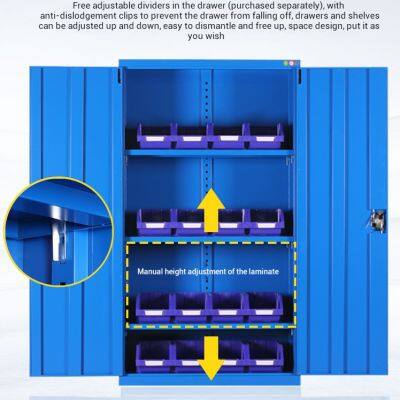 Mobile Tool Trolley Cabinet for Garage and Assembly Line Workstations|Drawer Tool CabinetUS$ 150 - 500MOQ: 5 PiecesMaterial: MetalStyle: ModernCondition: NewTransport Package: Carton BoxLuoyang Hengna Office Furniture Co., Ltd.1 Yr
Mobile Tool Trolley Cabinet for Garage and Assembly Line Workstations|Drawer Tool CabinetUS$ 150 - 500MOQ: 5 PiecesMaterial: MetalStyle: ModernCondition: NewTransport Package: Carton BoxLuoyang Hengna Office Furniture Co., Ltd.1 Yr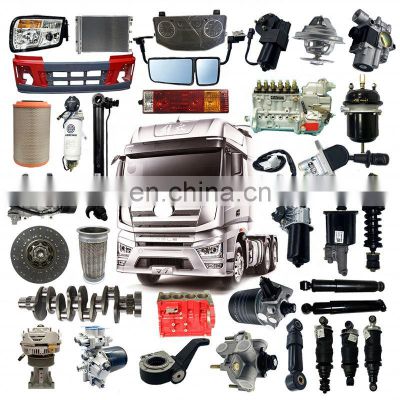 15G100P C-Type Clamp for FAW Truck Assembly Line - Forged Steel With Non-Slip HandleUS$ 5.5 - 50MOQ: 1 PieceHS Electrical Technology Co,LTD3 Yrs
15G100P C-Type Clamp for FAW Truck Assembly Line - Forged Steel With Non-Slip HandleUS$ 5.5 - 50MOQ: 1 PieceHS Electrical Technology Co,LTD3 Yrs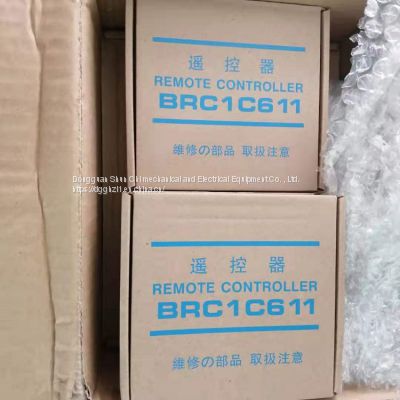 Daikin Air Conditioning Wired Remote Control Assembly BRC944C1C Dining Room Package Line ControlUS$ 200 - 1000MOQ: 1 PieceBrand Name: DaikinPlace of Origin: ChinaModel Number: Daikin Air Conditioning Wired Remote Control Assembly BRC944C1C Dining Room Package Line ControlCertification: ULDongguan Shun Chi Mechanical And Electrical Equipment Co. , Ltd.3 Yrs
Daikin Air Conditioning Wired Remote Control Assembly BRC944C1C Dining Room Package Line ControlUS$ 200 - 1000MOQ: 1 PieceBrand Name: DaikinPlace of Origin: ChinaModel Number: Daikin Air Conditioning Wired Remote Control Assembly BRC944C1C Dining Room Package Line ControlCertification: ULDongguan Shun Chi Mechanical And Electrical Equipment Co. , Ltd.3 Yrs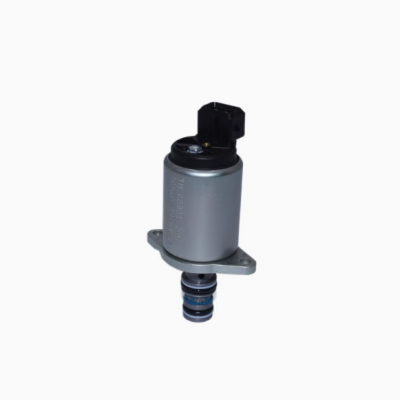 BUCHER Shield Machine Accessories BUCHER Assembly Machine Cylinder Solenoid Valve TM68001 Proportional Solenoid Valve Plug LineUS$ 100MOQ: 1 SetPlace of Origin: ChinaMaterial: OtherShape: OtherStandard or Nonstandard: StandardHunan Shanbuzhuanshuizhuan Power Technology Co.,Ltd1 Yr
BUCHER Shield Machine Accessories BUCHER Assembly Machine Cylinder Solenoid Valve TM68001 Proportional Solenoid Valve Plug LineUS$ 100MOQ: 1 SetPlace of Origin: ChinaMaterial: OtherShape: OtherStandard or Nonstandard: StandardHunan Shanbuzhuanshuizhuan Power Technology Co.,Ltd1 Yr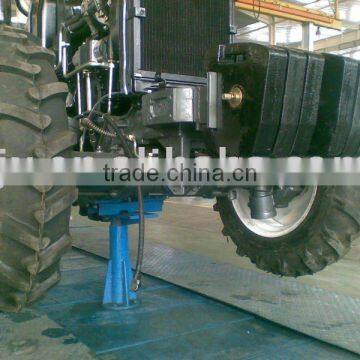 Assembly LineUS$ 1,000 - 1,000,000MOQ: 1 SetCondition: NewType: Screw ConveyorMaterial: Stainless SteelMaterial Feature: Fire ResistantAnyang Zhengcheng Machinery Co., Ltd.5 Yrs
Assembly LineUS$ 1,000 - 1,000,000MOQ: 1 SetCondition: NewType: Screw ConveyorMaterial: Stainless SteelMaterial Feature: Fire ResistantAnyang Zhengcheng Machinery Co., Ltd.5 Yrs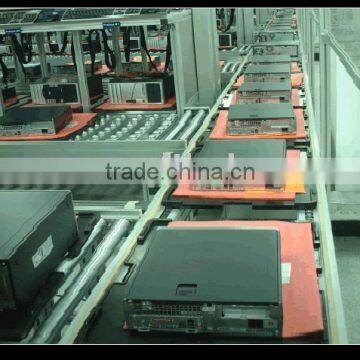 Assembly LineUS$ 1 - 99,999MOQ: 1 SetPlace of Origin: Jiangsu, ChinaBrand Name: AMCModel Number: AMC-0928AMC System Technology (Suzhou) Co., Ltd.5 Yrs
Assembly LineUS$ 1 - 99,999MOQ: 1 SetPlace of Origin: Jiangsu, ChinaBrand Name: AMCModel Number: AMC-0928AMC System Technology (Suzhou) Co., Ltd.5 Yrs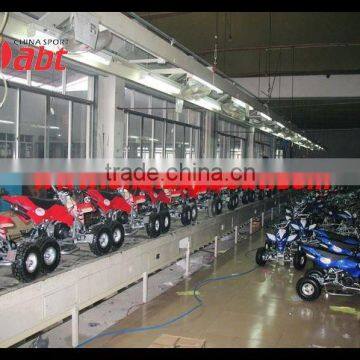 ATV Assemble LineNegotiableMOQ: 1Certification: Other, CEBrand Name: upbeatModel Number: atvYongkang Upbeat Industry And Trade Co., Ltd.5 Yrs
ATV Assemble LineNegotiableMOQ: 1Certification: Other, CEBrand Name: upbeatModel Number: atvYongkang Upbeat Industry And Trade Co., Ltd.5 Yrs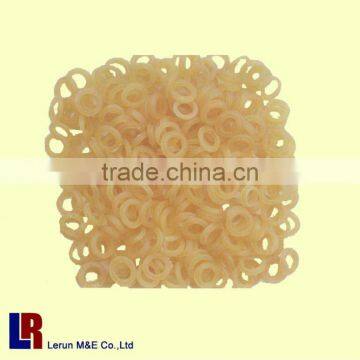 Fried Chips Assembly LineUS$ 10,000 - 50,000MOQ: 1 SetPlace of Origin: Shandong, ChinaBrand Name: LeRunModel Number: LRD100Jinan Lerun Machinery & Equipment Co., Ltd.5 Yrs
Fried Chips Assembly LineUS$ 10,000 - 50,000MOQ: 1 SetPlace of Origin: Shandong, ChinaBrand Name: LeRunModel Number: LRD100Jinan Lerun Machinery & Equipment Co., Ltd.5 Yrs SUV/Pickup Assembly LineUS$ 11,999 - 13,999MOQ: 10 UnitsType: SUVFuel: Gas/PetrolGear Box: ManualMade In: ChinaChongqing Big Science & Technology Development Co., Ltd.5 Yrs
SUV/Pickup Assembly LineUS$ 11,999 - 13,999MOQ: 10 UnitsType: SUVFuel: Gas/PetrolGear Box: ManualMade In: ChinaChongqing Big Science & Technology Development Co., Ltd.5 Yrs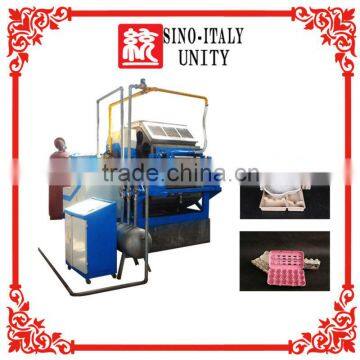 Egg Packing Assembly LineUS$ 230,000 - 450,000MOQ: 1 SetProduct Type: Paper Plate MachineProcessing Type: Pulp Molding MachinePlace of Origin: Shandong, ChinaLongkou Unity Machinery Equipment Co., Ltd.5 Yrs
Egg Packing Assembly LineUS$ 230,000 - 450,000MOQ: 1 SetProduct Type: Paper Plate MachineProcessing Type: Pulp Molding MachinePlace of Origin: Shandong, ChinaLongkou Unity Machinery Equipment Co., Ltd.5 Yrs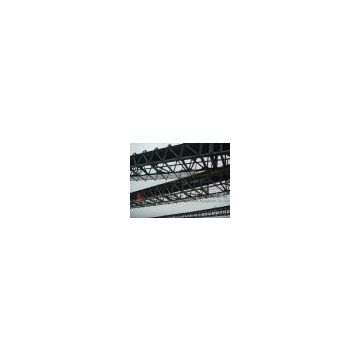 Belt Conveyor, Conveyor, Assembly LineNegotiableMOQ: 1 SetBrand Name: ZenithPlace of Origin: ChinaShanghai Zenith Mining And Construction Machinery Co., Ltd.5 Yrs
Belt Conveyor, Conveyor, Assembly LineNegotiableMOQ: 1 SetBrand Name: ZenithPlace of Origin: ChinaShanghai Zenith Mining And Construction Machinery Co., Ltd.5 Yrs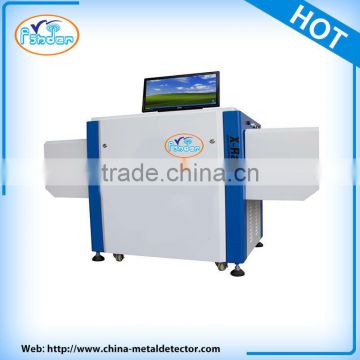 x Ray Machine for Industry Assembly LineUS$ 8,000 - 11,000MOQ: 1 SetPlace of Origin: Guangdong, ChinaBrand Name: VfinderModel Number: VXI200Dongguan V Finder Electronic Technology Co., Ltd.5 Yrs
x Ray Machine for Industry Assembly LineUS$ 8,000 - 11,000MOQ: 1 SetPlace of Origin: Guangdong, ChinaBrand Name: VfinderModel Number: VXI200Dongguan V Finder Electronic Technology Co., Ltd.5 Yrs Heavy Duty Assembly Line Table With DarwersUS$ 1 - 489MOQ: 3 PiecesCondition: NewPlace of Origin: Zhejiang, ChinaBrand Name: REACHModel Number: RQ9926Ningbo Reach Imp & Exp Co., Ltd.5 Yrs
Heavy Duty Assembly Line Table With DarwersUS$ 1 - 489MOQ: 3 PiecesCondition: NewPlace of Origin: Zhejiang, ChinaBrand Name: REACHModel Number: RQ9926Ningbo Reach Imp & Exp Co., Ltd.5 Yrs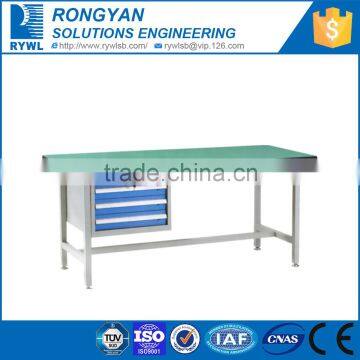 Light Duty Drawers Workshop Tables for Assembling LineUS$ 200 - 390MOQ: 5 SetsCondition: NewPlace of Origin: Jiangsu, ChinaBrand Name: RYWLModel Number: RWK-F-1504DShanghai Rongyan Logistics Equipment Co., Ltd.5 Yrs
Light Duty Drawers Workshop Tables for Assembling LineUS$ 200 - 390MOQ: 5 SetsCondition: NewPlace of Origin: Jiangsu, ChinaBrand Name: RYWLModel Number: RWK-F-1504DShanghai Rongyan Logistics Equipment Co., Ltd.5 Yrs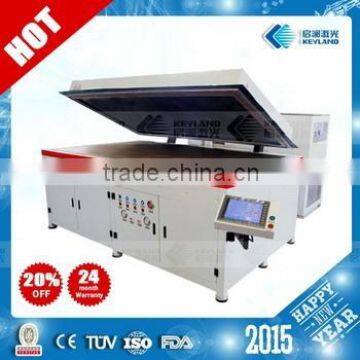 Solar Panel Assembly Line,solar Module Assembly MachineUS$ 10,000 - 80,000MOQ: 1 SetPlace of Origin: Jiangsu, ChinaBrand Name: Gosun/ Keyland LaserModel Number: GTM-5A-2012Jiangsu Keyland Laser Technology Co., Ltd.5 Yrs
Solar Panel Assembly Line,solar Module Assembly MachineUS$ 10,000 - 80,000MOQ: 1 SetPlace of Origin: Jiangsu, ChinaBrand Name: Gosun/ Keyland LaserModel Number: GTM-5A-2012Jiangsu Keyland Laser Technology Co., Ltd.5 Yrs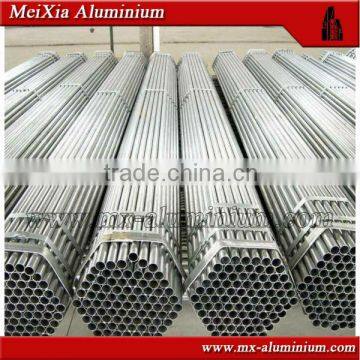 Different Color for Aluminum Bicycle Assembly Line Production LineUS$ 2,500 - 3,500MOQ: 1 TonPlace of Origin: Guangdong, ChinaGrade: 6000 SeriesTemper: T3-T8Application: Other, Heat Sink, Windows and Doors and IndustrialFoshan Nanhai Meixia Aluminium Co., Ltd.5 Yrs
Different Color for Aluminum Bicycle Assembly Line Production LineUS$ 2,500 - 3,500MOQ: 1 TonPlace of Origin: Guangdong, ChinaGrade: 6000 SeriesTemper: T3-T8Application: Other, Heat Sink, Windows and Doors and IndustrialFoshan Nanhai Meixia Aluminium Co., Ltd.5 Yrs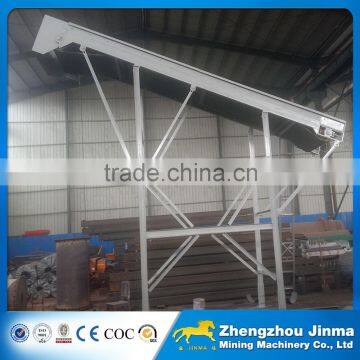 6~40 m Assembly Line Belt Conveyor For QuarryUS$ 200 - 6,000MOQ: 1 SetCondition: NewType: Gravity ConveyorMaterial: Other, Rubber, Carbon steelMaterial Feature: Fire ResistantZhengzhou Jinma Mining Machinery Co., Ltd.5 Yrs
6~40 m Assembly Line Belt Conveyor For QuarryUS$ 200 - 6,000MOQ: 1 SetCondition: NewType: Gravity ConveyorMaterial: Other, Rubber, Carbon steelMaterial Feature: Fire ResistantZhengzhou Jinma Mining Machinery Co., Ltd.5 Yrs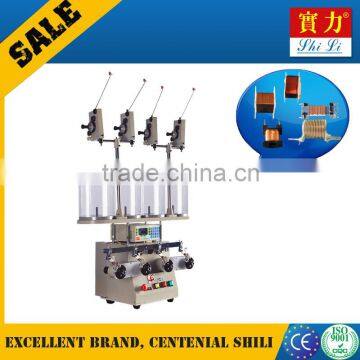 High Speed Plastic Cone Winding Machine is the Preferred Product Assembly LineNegotiableMOQ: 1 SetCondition: NewApplication: Stepping MotorAutomatic Grade: AutomaticProduction Capacity: HIGH SPEEDZhongshan Shili Wire Winder Equipment Co., Ltd.5 Yrs
High Speed Plastic Cone Winding Machine is the Preferred Product Assembly LineNegotiableMOQ: 1 SetCondition: NewApplication: Stepping MotorAutomatic Grade: AutomaticProduction Capacity: HIGH SPEEDZhongshan Shili Wire Winder Equipment Co., Ltd.5 Yrs Custom Flexible Good Quality Wholesale Assemble Line ProductionUS$ 70,000 - 700,000MOQ: 1Condition: NewType: Other, calcination furnacePlace of Origin: ChinaBrand Name: SDLiaoning Dongda Powder Engineering Technology Co., Ltd.5 Yrs
Custom Flexible Good Quality Wholesale Assemble Line ProductionUS$ 70,000 - 700,000MOQ: 1Condition: NewType: Other, calcination furnacePlace of Origin: ChinaBrand Name: SDLiaoning Dongda Powder Engineering Technology Co., Ltd.5 Yrs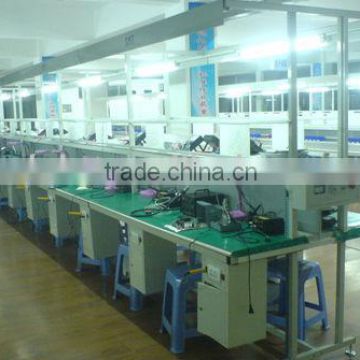 Vocational Education Equipment, Training Device, Electronic Assembly Line Training SystemUS$ 100 - 10,000MOQ: 1 SetPlace of Origin: Shandong, ChinaBrand Name: xingkeModel Number: XK-DZSX1EShandong Xingke Intelligent Technology Co., Ltd.5 Yrs
Vocational Education Equipment, Training Device, Electronic Assembly Line Training SystemUS$ 100 - 10,000MOQ: 1 SetPlace of Origin: Shandong, ChinaBrand Name: xingkeModel Number: XK-DZSX1EShandong Xingke Intelligent Technology Co., Ltd.5 Yrs Hot Seal Shaft Hanger Assembly From China Manufacture Car Assembly Line Drive Shaft Center Support BearingUS$ 0.1 - 10MOQ: 100 PiecesType: OtherTruck Model: HowoSize: customsizeMaterial: rubber&steel, Rubber,SteelXingtai Changshuo Auto Parts Co., Ltd.5 Yrs
Hot Seal Shaft Hanger Assembly From China Manufacture Car Assembly Line Drive Shaft Center Support BearingUS$ 0.1 - 10MOQ: 100 PiecesType: OtherTruck Model: HowoSize: customsizeMaterial: rubber&steel, Rubber,SteelXingtai Changshuo Auto Parts Co., Ltd.5 Yrs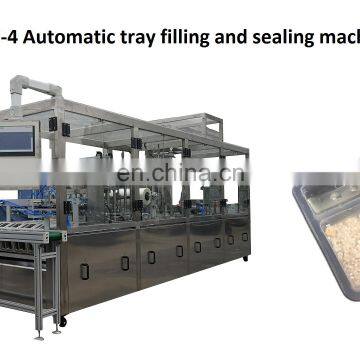 Shanghai Joygoal Light-duty Pvc Belt Conveyor Turn Band Transport for Assemble LineUS$ 500 - 5,000MOQ: 3 SetsPlace of Origin: Shanghai, ChinaMaterial: NylonStructure: Belt ConveyorShanghai Joygoal Food Machinery Co., Ltd.5 Yrs
Shanghai Joygoal Light-duty Pvc Belt Conveyor Turn Band Transport for Assemble LineUS$ 500 - 5,000MOQ: 3 SetsPlace of Origin: Shanghai, ChinaMaterial: NylonStructure: Belt ConveyorShanghai Joygoal Food Machinery Co., Ltd.5 Yrs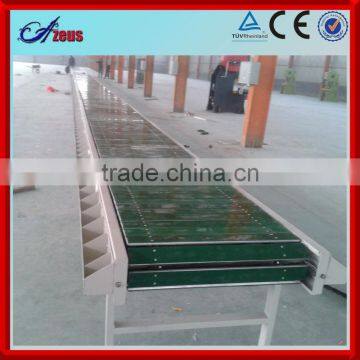 Food Grade Conveyor Roller Assembly Line Distributor Conveyor Belt Aluminium Profile ConveyorUS$ 1,000 - 3,990MOQ: 1 SetCondition: NewType: Other, aluminium profile conveyorMaterial: Other, food grade rubber,PVC,PU or other materialsMaterial Feature: Heat ResistantZhengzhou Azeus Machinery Co., Ltd.5 Yrs
Food Grade Conveyor Roller Assembly Line Distributor Conveyor Belt Aluminium Profile ConveyorUS$ 1,000 - 3,990MOQ: 1 SetCondition: NewType: Other, aluminium profile conveyorMaterial: Other, food grade rubber,PVC,PU or other materialsMaterial Feature: Heat ResistantZhengzhou Azeus Machinery Co., Ltd.5 Yrs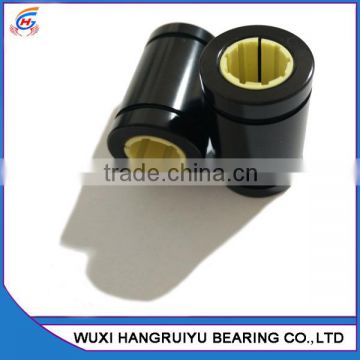 Cylindrical in Shape 25mm Bore Plastic Linear Bearings LIN-01R-25 With Open Ends on Robotic Assembly LinesUS$ 0.1 - 100MOQ: 50 PiecesBrand Name: OEMPrecision Rating: P0,P2,P4,P5,P6, ABEC-1, ABEC-3, ABEC-5, ABEC-7,ABEC9Model Number: LME25UUPlace of Origin: Jiangsu, ChinaWuxi Hangruiyu Bearing Co., Ltd.5 Yrs
Cylindrical in Shape 25mm Bore Plastic Linear Bearings LIN-01R-25 With Open Ends on Robotic Assembly LinesUS$ 0.1 - 100MOQ: 50 PiecesBrand Name: OEMPrecision Rating: P0,P2,P4,P5,P6, ABEC-1, ABEC-3, ABEC-5, ABEC-7,ABEC9Model Number: LME25UUPlace of Origin: Jiangsu, ChinaWuxi Hangruiyu Bearing Co., Ltd.5 Yrs Purchasing Director negotiating terms for Assembly line cording embroidery device price2025-10-26 04:35:36
Purchasing Director negotiating terms for Assembly line cording embroidery device price2025-10-26 04:35:36 Procurement Specialist requested specs for High quality wave soldering feeder for LED PCB assembly line2025-10-27 00:11:49
Procurement Specialist requested specs for High quality wave soldering feeder for LED PCB assembly line2025-10-27 00:11:49 Lead Purchaser is sourcing Double Speed chain assembly line workshop automation production line equipment assembly line with elevator tooling plate assembly cable2025-10-23 17:17:41
Lead Purchaser is sourcing Double Speed chain assembly line workshop automation production line equipment assembly line with elevator tooling plate assembly cable2025-10-23 17:17:41 Operations Head inquired about Automobile Fan Motor Assembly Line2025-10-24 23:55:37
Operations Head inquired about Automobile Fan Motor Assembly Line2025-10-24 23:55:37 Verified Buyer submitted an RFQ for R-9988B Three-dimensional packing assembly line2025-10-27 14:04:04
Verified Buyer submitted an RFQ for R-9988B Three-dimensional packing assembly line2025-10-27 14:04:04 Business Owner placed an order for Automatic assembly line sealing machine12 hours ago
Business Owner placed an order for Automatic assembly line sealing machine12 hours ago Importer requested specs for Eye Line Removal 2014 Cheapest Multifunction Beauty Equipment Pcb Assembly Shielding Box Whitening Skin2025-10-26 14:44:38
Importer requested specs for Eye Line Removal 2014 Cheapest Multifunction Beauty Equipment Pcb Assembly Shielding Box Whitening Skin2025-10-26 14:44:38 Importer submitted an RFQ for Fully-automatic LED Lamps Manufacturing Equipment and SMT Assembly Line2025-10-27 06:56:23
Importer submitted an RFQ for Fully-automatic LED Lamps Manufacturing Equipment and SMT Assembly Line2025-10-27 06:56:23 Operations Head is sourcing PU friction drive wheel, polyurethane wheels, automotive assembly line parts,polyurethane coated wheel15 hours ago
Operations Head is sourcing PU friction drive wheel, polyurethane wheels, automotive assembly line parts,polyurethane coated wheel15 hours ago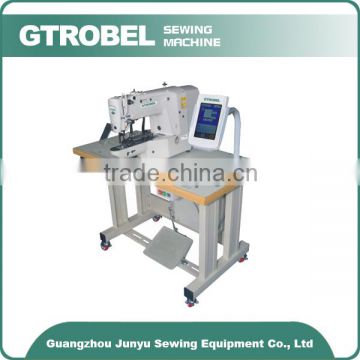 Low Price Cut off the Assembly Line Computer Botton Holer Lockstitch Sewing MachineUS$ 1,800 - 2,500MOQ: 5 SetsCondition: NewType: Industrial Sewing MachinePlace of Origin: ChinaBrand Name: GTROBELGuangzhou Junyu Sewing Equipment Co., Ltd.5 Yrs
Low Price Cut off the Assembly Line Computer Botton Holer Lockstitch Sewing MachineUS$ 1,800 - 2,500MOQ: 5 SetsCondition: NewType: Industrial Sewing MachinePlace of Origin: ChinaBrand Name: GTROBELGuangzhou Junyu Sewing Equipment Co., Ltd.5 Yrs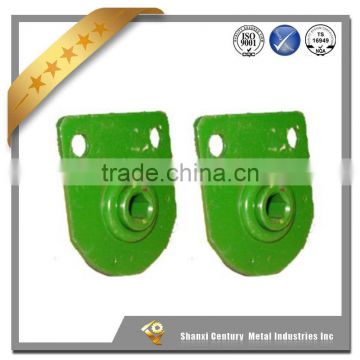 Bearing Assembly for Seed Drive Line.US$ 1 - 3MOQ: 5000 PiecesType: Other, Bearing Assembly for Seed Drive Line, Bearing Assembly for Seed Drive LineUse: TractorsPlace of Origin: Shanxi, ChinaBrand Name: CMI Bearing AssemblyShanxi Century Metal Industries Inc.5 Yrs
Bearing Assembly for Seed Drive Line.US$ 1 - 3MOQ: 5000 PiecesType: Other, Bearing Assembly for Seed Drive Line, Bearing Assembly for Seed Drive LineUse: TractorsPlace of Origin: Shanxi, ChinaBrand Name: CMI Bearing AssemblyShanxi Century Metal Industries Inc.5 Yrs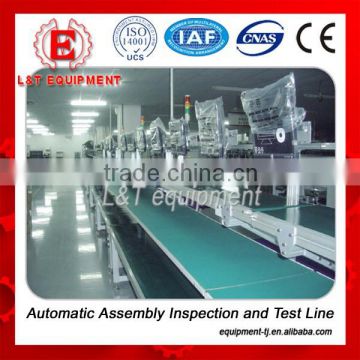 Automatic Assembly Inspection and Test LineNegotiableMOQ: 1 SetPlace of Origin: ChinaBrand Name: MEScale: Medium DutyL&T Mechanical & Electrical Equipment Co., Ltd.5 Yrs
Automatic Assembly Inspection and Test LineNegotiableMOQ: 1 SetPlace of Origin: ChinaBrand Name: MEScale: Medium DutyL&T Mechanical & Electrical Equipment Co., Ltd.5 Yrs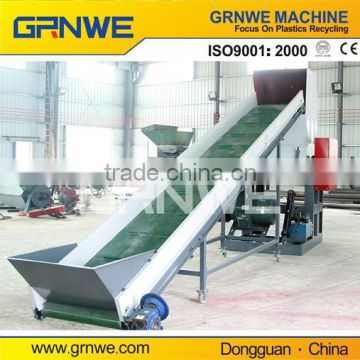 Fully Assembled Rubber Belt Conveyor in Recycling LineUS$ 2,500 - 4,200MOQ: 1 SetCondition: NewPlace of Origin: Guangdong, ChinaBrand Name: GRNWEModel Number: GW-CV100Dongguan GRNWE Machinery Co., Ltd.5 Yrs
Fully Assembled Rubber Belt Conveyor in Recycling LineUS$ 2,500 - 4,200MOQ: 1 SetCondition: NewPlace of Origin: Guangdong, ChinaBrand Name: GRNWEModel Number: GW-CV100Dongguan GRNWE Machinery Co., Ltd.5 Yrs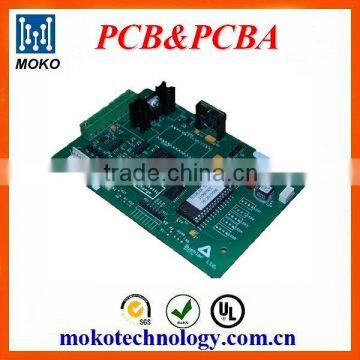 Shenzhen Yamaha SMT Lines PCBA PCB AssemblyUS$ 0.24 - 100MOQ: 100 PiecesPlace of Origin: Guangdong, ChinaBrand Name: MokoModel Number: MKPCBAPP0393Base Material: FR4,Alu.Shenzhen Moko Technology Ltd.5 Yrs
Shenzhen Yamaha SMT Lines PCBA PCB AssemblyUS$ 0.24 - 100MOQ: 100 PiecesPlace of Origin: Guangdong, ChinaBrand Name: MokoModel Number: MKPCBAPP0393Base Material: FR4,Alu.Shenzhen Moko Technology Ltd.5 Yrs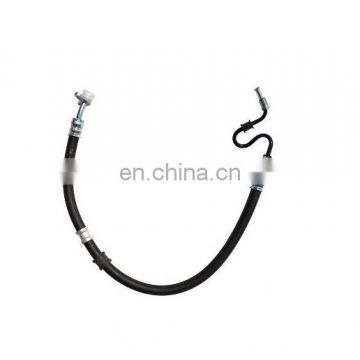 Autos Power Steering Pressure Line Hose Assembly For HONDA OEM 53713-S9A-Q03 / 53713S9AQ03US$ 7.77 - 7.77MOQ: 50 PiecesBrand Name: GOGOPlace of Origin: Zhejiang, ChinaSuzhou Qqqpet Electronic Technology Co., Ltd.5 Yrs
Autos Power Steering Pressure Line Hose Assembly For HONDA OEM 53713-S9A-Q03 / 53713S9AQ03US$ 7.77 - 7.77MOQ: 50 PiecesBrand Name: GOGOPlace of Origin: Zhejiang, ChinaSuzhou Qqqpet Electronic Technology Co., Ltd.5 Yrs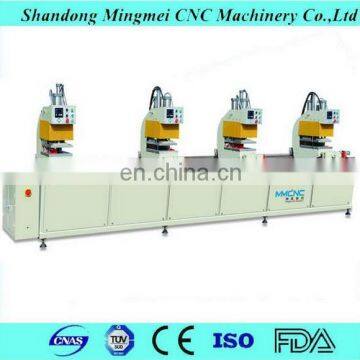 UPVC Window Production Line Pvc Window Assemble Wedling Machine for Pvc Window Frames UsedUS$ 7,800 - 7,900MOQ: 1 SetBrand Name: MMCNC/MAXICUTModel Number: SHJ4-100*4500Sinon CNC Machine Co., Ltd.5 Yrs
UPVC Window Production Line Pvc Window Assemble Wedling Machine for Pvc Window Frames UsedUS$ 7,800 - 7,900MOQ: 1 SetBrand Name: MMCNC/MAXICUTModel Number: SHJ4-100*4500Sinon CNC Machine Co., Ltd.5 Yrs
